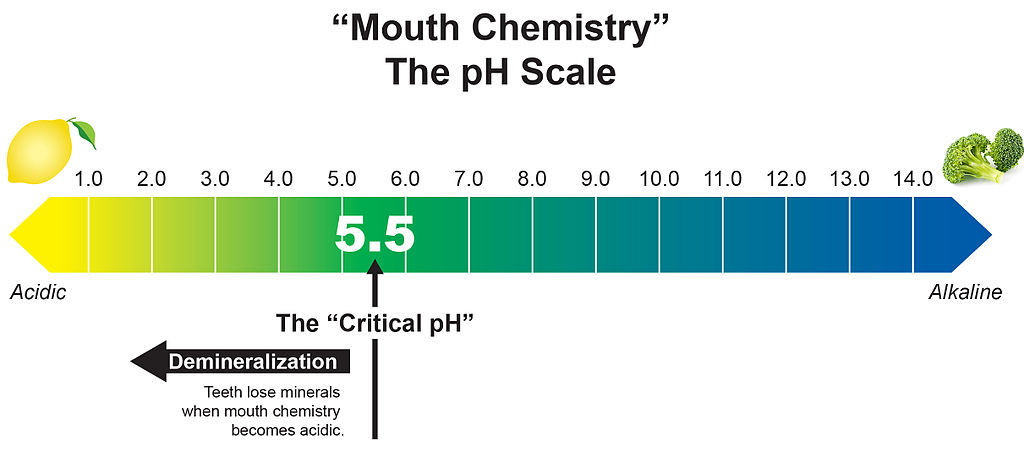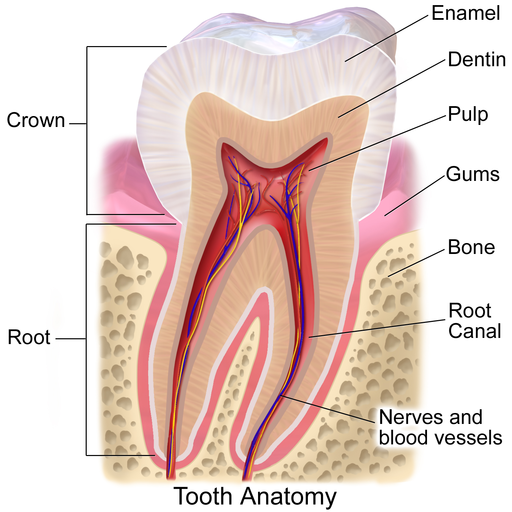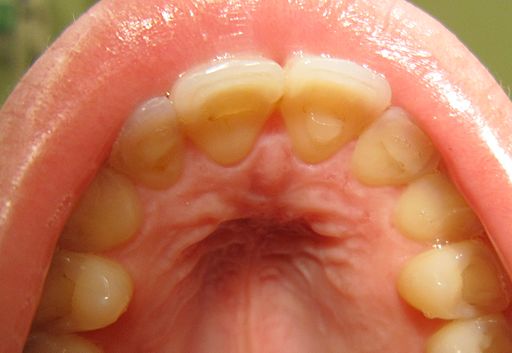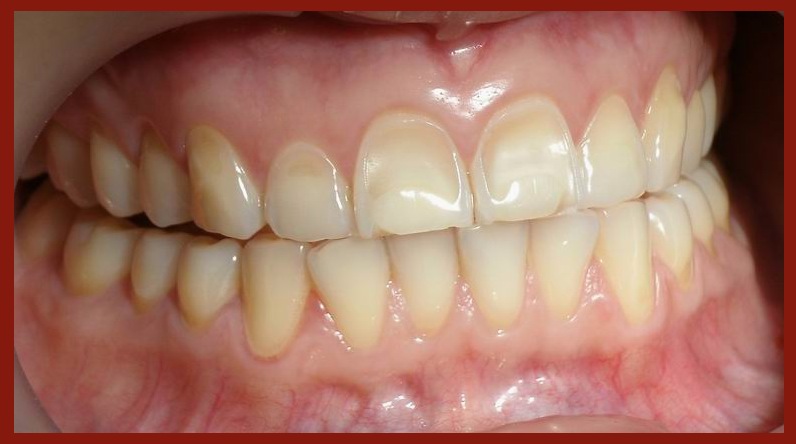What is tooth erosion?
Erosion is the wearing away of the tooth surface by an acid, which dissolves the enamel and the dentine. There are a variety of ways that tooth structure is lost.
Food-based dental erosion was first described in 1892 among Sicilian lemon pickers. Food and beverages can dissolve tooth structure if they are acidic enough. Gastric regurgitation is another source of acid that can dissolve teeth. Exposure to environmental substances in the air might also be a source of the erosive chemical. While rare, some individuals have saliva that is acidic enough to dissolve exposed dentin surface, and when it is impossible to find the source, this is called idiopathic erosion.
Related Reading: How to Perform an Occlusal Analysis
Like what you’re learning? Take it a step further and test your clinical diagnosis skills with USC’s Virtual Patient Simulation. Review real-life patient histories, symptoms, and imaging, conduct a medical interview and clinical exam, make a diagnosis, and create a treatment plan for virtual patients experiencing Orofacial Pain conditions.

Six Dental Erosion Causes
- Dietary
- Regurgitation
- Environmental
- Flow of saliva
- Exposed dentin
- Idiopathic
Food & Beverage Causes of Tooth Erosion
Two sources of acid in the mouth are dietary and gastric, and the acid dissolves the calcium in the tooth. Beverages with high acid content include all carbonated beverages and citrus-based drinks (orange juice, grapefruit juice). Additionally, wine has been shown to erode teeth, with the pH of wine as low as 3.0–3.8.

The degree of tooth erosion from acidic beverages is directly related to the frequency and amount of these beverages that are consumed. Foods that are high in acidic content include citrus fruits (oranges, lemons, and grapefruit) as well as pickles and vinegar. Frequently consumed foods and drinks with a pH below 5.7 may initiate dental erosion.
Like what you’re learning? Download a brochure for our Orofacial Pain and Oral Medicine certificate or master’s degree program.
Sources of Dietary Tooth Erosion
- Citric acid in soft drinks
- Acidic fruit juices
- Acidic sugar-free drinks
- Fruits
Tooth Erosion from Regurgitation

The acid produced in the stomach during the digestive process is sufficiently powerful to dissolve any food, including bone and teeth. When the contents of the stomach are regurgitated, the acid comes into contact with the teeth. Any condition that causes repetitive vomiting or regurgitation will cause erosion of teeth.
The dentist is often the first to notice the problem. The back surfaces of the front teeth are the first to be affected. The erosion is seen as a light yellow patch on the tooth. This indicates that the enamel has been dissolved and the sensitive dentine under the enamel has been exposed. This exposure of the dentine will result in pain from sweet, hot, and cold food and drinks. If the erosion penetrates deeper and reaches the nerves and blood vessels, the pain can become severe.
People with diseases such as gastroesophageal reflux disease (GERD)1, anorexia nervosa, and eating disorders like bulimia suffer from tooth erosion. GERD is quite common, and an average of 7% of adults experience reflux daily. The leading cause of GERD is increased acid production by the stomach.

Sources Tooth Erosion from Regurgitation
- Eating disorders
- Gastrointestinal (GERD)
- Chronic alcoholism
Erosion from habitual regurgitation of gastric contents can be increased with a heavily acidic diet. Regurgitation produces wide shallow lesions, enamel may be completely lost, and the patient might not admit to an unattractive aspect of psychological illness.
Role of Saliva in Tooth Erosion
Saliva acts as a buffer to dental erosion, lowering the pH when acidic drinks and food are ingested. Acidic foods and beverages will have a greater effect on patients with hyposalivation due to primary xerostomia, drug-related hyposalivation, Sjogren syndrome-related hyposalivation, and radiotherapy gland damage with secondary hyposalivation.
In some individuals, saliva itself may be the cause of the erosion. In some individuals, salivary pH is lower because of medications taken that alter saliva such as vitamin C, aspirin, and some iron preparations. Mostly saliva is not acidic enough to dissolve enamel, but exposed dentin is another story. When dentin is exposed due to attrition or abrasion, dentin dissolves at pH 6.0 (remember pH 7.0 is neutral). Patients with dentin that is dissolving will typically show cupping erosion on the occlusal surfaces of the teeth.
Environmental Causes of Dental Corrosion
Possible sources of erosive acids are from exposure to chlorinated swimming pool water. Erosion has been seen in battery plant workers, picklers and miners who are around the fumes which are acidic.
What is idiopathic tooth erosion?
Idiopathic erosion is by definition, when you do not know the cause.
How to Diagnose Tooth Erosion

The process of diagnosis involves a series of questions:
- Is it really erosion and if so, what type?
- Does the patient report or exhibit signs of regurgitation?
- Does the patient report or exhibit signs of reflux?
- Does the patient report ingestion of acidic foods or drinks?
- If it is erosion, is it current or is it old?
- How severe and progressive is it?
- Does it need monitoring or treatment?
What is the best way to monitor dental erosion?
The best way to monitor tooth erosion is by documenting the current state of the problem with photos or models, and periodically recalling and comparing these photos or models.
Tooth Erosion Treatment & Repair
The answer depends on the type of dental erosion. Below are some options for treatment of active tooth tissue loss.
- Treating the underlying medical disorder or disease.
- Modifying the pH of the food or beverage contributing to the problem
- Changing the patient’s lifestyle to avoid the food or beverage.
- Decreasing abrasive forces.
- Use a soft-bristled toothbrush and brush gently.
- Leave at least half an hour before brushing teeth after consuming acidic food and drinks (teeth will be softened)
- Rinse with water after consuming acidic foods and drinks.
- Drinking through a straw.
- Using a re-mineralizing agent, such as sodium fluoride solution in the form of a fluoride mouth rinse, tablet, or lozenge, immediately before brushing teeth.
- Applying fluoride gels or varnishes to the teeth.
- Drinking milk or using other dairy products.
- Using a neutralizing agent such as antacid tablets.
- Applying dentine bonding agents to areas of exposed dentin.
Severe Tooth Erosion Repair
Gold and porcelain are logical, and below is an abstract that describes treating severe dental erosion with ultra-thin CAD/CAM composite occlusal veneers and anterior bilaminar veneers.
Ultrathin Bonded Veneers for Tooth Erosion
The study found that ultra-thin occlusal veneers is an alternative erosion treatment, and reported cases of complete mouth rehabilitation with veneers. In this Patients in this study had severely eroded dentition, and the dental clinician took a bilaminar approach to the a maxillary anterior teeth. This method allows only strategic reduction with no preparation.
Prevention of Tooth Erosion
There are a few ways patients can prevent dental erosion. From an oral healthcare point of view, patients can use fluoride toothpaste, mouthwash, gel, or desensitizing toothpaste. For dental erosion from acidic beverages and food, patients can limit acidic food/drink to mealtimes or totally, stop drinking carbonated beverages, do not drink citrus fruits or use a straw.
If caused by regurgitation, eating disorder, or alcohol addiction then refer the patient to a Psychologist. If Gastroesophageal reflux disease (GERD), refer the patient to their physician.
Earn an Online Postgraduate Degree in Orofacial Pain and Oral Medicine
Are you interested in a variety of issues focused on orofacial pain, medicine and sleep disorders? Consider enrolling in the Herman Ostrow School of Dentistry of USC’s online, competency-based certificate or master’s program in Orofacial Pain and Oral Medicine.

